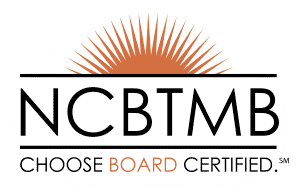The human body is a remarkable creation. It can withstand incredible physical and emotional strain while still carrying out its essential activities. Physical and emotional stress are exacerbated by surgery, which has a negative impact on the body. After surgery, the path to recovery can be drawn out and challenging, but there are ways to make it easier. Massage is one of the most efficient. You may mend and recover from surgery more quickly with the help of therapeutic intervention.
After surgery, your body is undergoing the repair process. Your organs, muscles, and tissues are all working frantically to repair your incisions and restore you to homeostasis, or your pre-surgery status. Your body experiences both physical and emotional stress as a result, and it needs time, nurturing, and rest to recuperate.
However, many people report difficulty relaxing after surgery. Massage can help with this. Massage can assist your body in relaxing and settling into the healing process. Massage may help to reduce stress and anxiety, which may improve sleep and speed up the healing process. Massage has also been shown to be an effective pain treatment. Because massage causes the body to release pain-relieving hormones, it may help to alleviate post-operative discomfort.
Massage after surgery is helpful in a plethora of other ways as well. Massage can speed up the healing process by reducing swelling and inflammation. According to the American Massage Therapy Association (AMTA), “Lymphatic drainage massage is useful in reducing both pain and swelling, and should in many cases be considered a core part of the broader post-surgical therapeutic protocol” (Hendershot). After surgery, it’s common for fluids to build up in the extremities. This can lead to swelling, stiffness, and a general feeling of heaviness, all of which may be improved by getting regular post-surgery massages.
Massage can also improve your range of motion and help your surgical scars heal more effectively. John Chamness in conjunction with AMTA states, “Scar tissue can be made more pliable and functional by realigning it in the direction of the desired stretch… This can increase joint ease and range of motion, and reduce pain” (Hendershot). Surgery often leads to stiffness and restricted movement. Massage can help to loosen up the muscles and joints, making it easier to get back to your normal activities.
There are numerous types of massages; your needs and preferences will determine the type you receive. Swedish, deep tissue, or signature massage are all common kinds of massage that can be used for recovery from surgery. Swedish massage is a gentle massage that is ideal for those recovering from surgery. To target the uppermost part of your muscles, Swedish massage uses long strokes toward the heart and intentionally lighter pressure. Deep tissue is a method using depth, precision, and focus. This may not be appropriate directly following all types of surgery. This type of massage focuses on releasing deep body tension, addressing scar tissue, and removing knots that have formed over time. Jackson Hole Mobile Massage offers a signature massage, which may be the perfect match for those recovering from surgery. Our massage therapists will work with you to develop the perfect massage to address your specific needs and pain points. Each therapist has unique training to combine a variety of modalities perfect for your session. We customize your massage experience to target your exact pain points, injuries, and emotional holding patterns.
Your massage therapist will collaborate with you to determine the most appropriate type of massage for your recovery. They will also employ various techniques based on your specific needs. For instance, if you are in pain around a healed surgery site, the massage therapist may use a light touch. They may use stretching and manipulation to help you improve your range of motion. Throughout any massage, but especially after surgery, a good massage therapist will ask for your feedback on your needs.
There is no one-size-fits-all approach to massage after surgery or massage in general! However, there are some general benefits that all types of massage can provide. In summary, the benefits of post-surgery massage may include:
- Reducing stress
- Reducing pain
- Reducing inflammation
- Improving range of motion
- Improving circulation
Massage after surgery can begin as soon as your doctors give the go-ahead. You should also monitor your own comfort levels. When you feel ready to lay on a massage table and be touched, you should look into receiving massage. You can also discuss the frequency of massages with your doctor and massage therapist going forward. Happy healing!
Resources
Hendershot, Steve. “Massage Post Joint Replacement Surgery | Massage Therapy Journal.” American Massage Therapy Association, 1 Feb. 2022, www.amtamassage.org/publications/massage-therapy-journal/massage-post-joint-replacement/.




